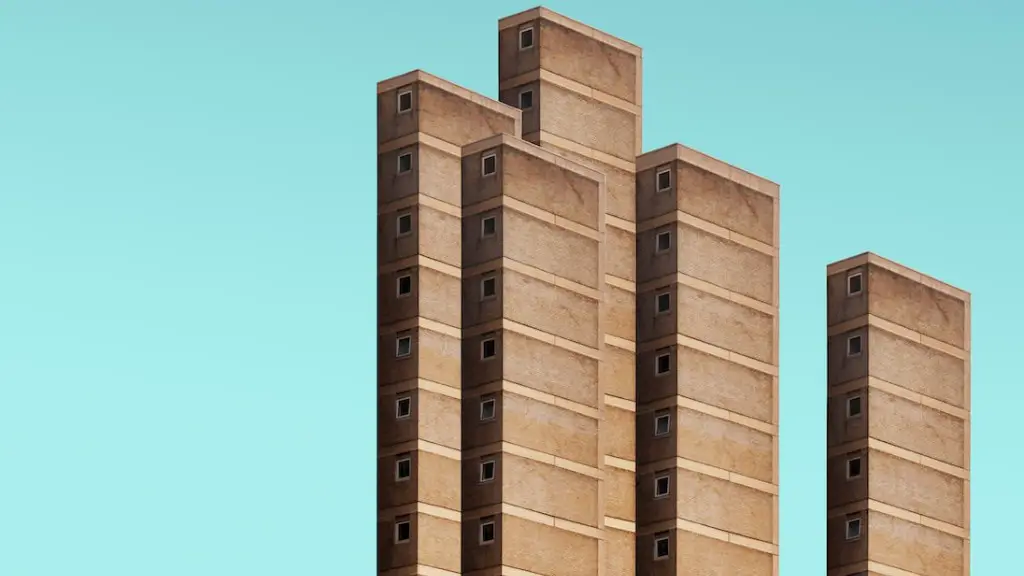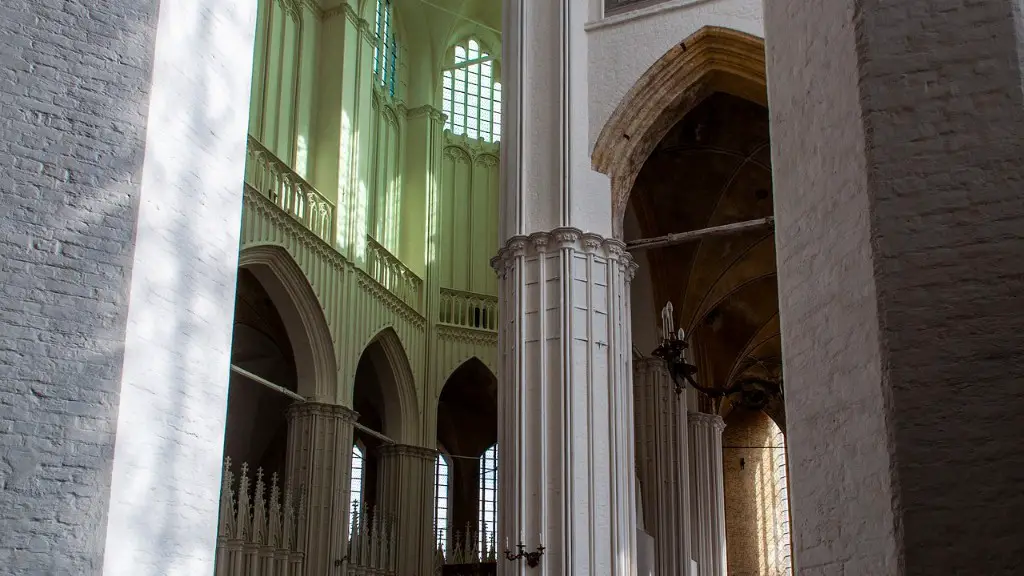Deconstructivist architecture is a form of architecture that emphasizes the fragmentation and dislocation of architectural elements. It is often seen as a reaction to the formalism of the International Style of architecture.
In deconstructivist architecture, the building is not intended to look like it was constructed in a traditional way. The building is meant to look as though it is being deconstructed or taken apart. This type of architecture is often seen as chaotic and confusing.
What is meant by deconstructivism in architecture?
Deconstructivism is a contemporary architectural movement that developed in opposition to the ordered rationality of modernism. Its non-linear style and defiance in the face of symmetrical shapes propelled the creation of buildings with a unique visual appearance.
Frank Gehry’s 1997 Guggenheim Museum Bilbao is a well-known deconstructivist building that helped to revitalize the city’s economy and started a global trend for iconic cultural buildings.
What is deconstructivism in simple words
Deconstructivism is a movement in architecture that began in the late 1980s. It is characterized by an emphasis on fragmenting, disassembling, or subverting architectural components and forms.
Deconstructivist architecture is a type of architecture that is characterized by surface manipulation, fragmentation, and non-rectilinear shapes which distort and dislocate architectural conventions concerning structure and envelope. This type of architecture often challenges traditional ideas about what a building should look like and how it should be constructed.
What was the first deconstructivism architecture?
Parc de la Villette is believed to be the first built Deconstructivist project. The massive park consists of a group of buildings, walkways, bridges, gardens and more planned across a surprisingly large site in the City of Light. The park is a great example of Tschumi’s theory of Deconstructivism, which aims to create a space that is both open and closed, both public and private.
The idea of deconstruction is concerned with countering the idea of a transcendental origin or natural referent. It refutes the notion that it is possible to transgress the institution in order to discover something beyond — the existence of an independent origin.
What is an example of deconstructivism?
Deconstructivism is a style of architecture that emerged in the 1980s. It is characterized by fragmentation, an irregularity in shape, and an apparent lack of a cohesive structure.
The most notable examples of deconstructivism are the CCTV Headquarters in Beijing, the Dancing House in Prague, and the Imperial War Museum in Manchester.
The point of the deconstructive analysis is to restructure, or “displace,” the opposition, not simply to reverse it. For Derrida, the most telling and pervasive opposition is the one that treats writing as secondary to or derivative of speech. By displacing this opposition, Derrida hopes to publicize the fact that speech is not a pure and unmediated expression of thought, but is itself a form of writing.
What are the main elements of deconstruction
Deconstruction has at least two aspects: literary and philosophical. The literary aspect concerns the textual interpretation, where invention is essential to finding hidden alternative meanings in the text. The philosophical aspect concerns the understanding of the text in relation to the larger world. In this way, deconstruction is a way of understanding the world through the lens of the text.
Deconstructivism is an architectural movement that began in the late 1980s, characterized by its fragmentation, distortion, and exaggeration of components of architecture. It is a form of postmodernism that challenges the traditional forms and conventions of architecture.
Deconstructivism allows architects to produce buildings with highly respectable aesthetic sense through its excellent manipulation of the building design structure into unpredictable shapes or form. This results in architectural designs that are unique and interesting to look at.
What are the origins of deconstructivist architecture?
Tschumi’s use of deconstruction in his design for the Parc de la Vilette allowed for a more open and flexible approach to the layout of the park. By using Derrida’s ideas, Tschumi was able to create a space that was not bound by traditional constraints, which allowed for a greater degree of freedom and creativity in the design.
Deconstruction is a process of breaking down assumptions and beliefs in order to rebuild them in a more holistic and authentic way. Recognition is the first stage of this process, in which we become aware of the limitations of our current beliefs. Reprogramming is the second stage, in which we begin to question these beliefs and explore other worldviews. Relapse is the third stage, in which we may find ourselves reverting back to old ways of thinking out of habit or insecurity. Ultimately, deconstruction is a lifelong journey of continual growth and evolution.
What are the benefits of deconstruction
There are many benefits to recycling building materials: it reduces the harmful effects of natural resource extraction, transportation, and energy consumption, it recycles perfectly useable material for reuse and creative repurposing, and it keeps material local, reducing additional adverse harvesting, mining and transportation effects.
Deconstruction is a method of literary criticism that suggests that meaning is not inherent in texts, but is instead created by the reader. This is because meaning is not fixed, but is instead fluid and dependent on context. Deconstruction challenges the idea of binary oppositions, such as good/bad, love/hate, white/black, and male/female. These binaries are often used to create hierarchy, with one side being seen as better than the other. Deconstructionist critics believe that we need to challenge these oppositions and view objects and texts without the lens of these hierarchies.
What is deconstructed style?
Deconstructionism in fashion is all about giving garments an unfinished appearance. This can be done by incorporating raw edges, exposed seams and distressed textiles into the design of the garment. This style is usually called deconstructionism because it hints at the process of design and creation. By deconstructing a garment, we can get a better understanding of how it was made and how it works.
The New TestamentOpening chapters of John Engages Jesus in work that is aptly called “deconstruction” In John 2, Jesus tells the religious leaders to tear down (de-construct) the temple.
Who created deconstruction theory
Jacques Derrida was a French philosopher who is best known for his development of the theory of deconstruction. Deconstruction is a way of critically analyzing not only literary and philosophical texts, but also political institutions. Derrida’s work has provoke much controversy, but has also had a significant influence on many disciplines, including literary criticism, philosophy, and anthropology.
Deconstruction is the process of dismantling a structure in order to reuse or recycle its components. It usually consists of two stages: a soft strip of reusable or recyclable materials, and a structural demolition. These are preceded by the removal of any hazardous materials (if applicable).
Warp Up
Deconstructivist architecture is an approach to design that emphasizes the fragmentary and the unstable, instead of striving for coherence or unity. It is often characterized by an absence of symmetry, by irregularity and fragmentation, and by an embrace of elements that are seemingly contradictory or in conflict with one another.
Deconstructivist architecture is a type of architectural style that emerged in the late 1980s. It is characterized by an irregularity in form and an apparent lack of structure. The style is often seen as a reaction against the traditional forms and ideas of modern architecture.





